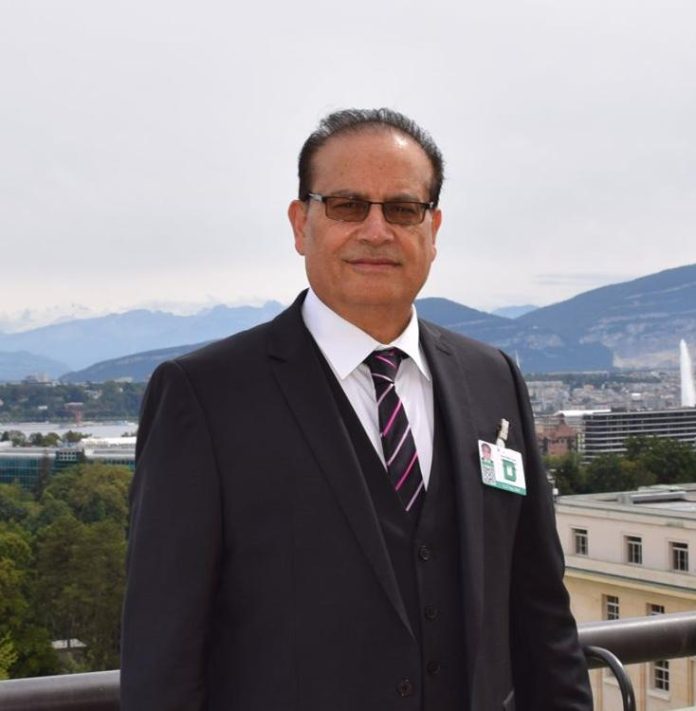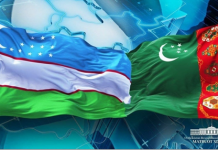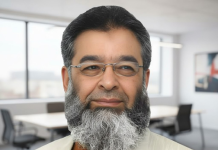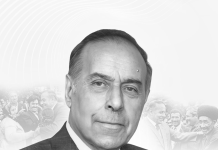Qamar Bashir
Our first Eid in Michigan was not just a religious celebration—it was a deeply moving and eye-opening experience. Having migrated to the United States on September 7, 2024, this marked our first Ramadan and Eid in a new land, far from the traditions and familiar environment of our homeland. After observing nearly 30 days of fasting, Eid arrived as a welcome occasion of joy, community, and spiritual fulfillment.
That morning, our entire family woke early, dressed in festive clothes, and enjoyed a traditional bowl of kheer, a gesture rooted in our cultural and religious identity. Soon after, we boarded two cars and made our way to the Islamic Center of Rochester Hills, located near Detroit, Michigan. This was our first visit, and not knowing what to expect, I assumed it would be a small mosque or a community hall—perhaps a modest place temporarily arranged for Eid prayers. But what greeted us upon arrival was beyond anything I had imagined.
The Islamic Association of Greater Detroit (IAGD), located at Auburn Road, Rochester Hills, Michigan established in 1978 has grown into a pivotal institution for the local Muslim community, offering spiritual guidance, educational programs, and social services. A significant $20 million expansion in March 2024 increased the facility’s total area to approximately 100,000 square feet, making it one of Michigan’s largest Islamic centers. Inside, spacious prayer halls, classrooms, meeting rooms, a library, recreational spaces, and community event areas support a wide range of activities, including religious gatherings, educational seminars, interfaith dialogues, and social outreach initiatives, highlighting the center’s dedication to community enrichment and intercultural understanding.
The prayer hall was enormous, large enough to accommodate thousands of worshippers. Male and female worshippers prayed in separate sections, maintaining tradition while fostering inclusivity. The hall was beautifully adorned with Quranic calligraphy, and large digital clocks displayed prayer timings. The level of organization and discipline during the Eid prayer was exemplary, a reflection of the unity and respect deeply embedded in the Muslim community here.
Following the prayer, the khutbah (sermon) by the khateeb delivered a powerful message. He shared an astonishing fact: Muslims in the United States—numbering around 4 to 5 million—collectively hold an estimated purchasing power of nearly $200 billion. That’s more than the GDP of many Muslim-majority countries. He emphasized that this economic power should not be underestimated. It can and should be used strategically—not only to secure rights, protect freedoms, and advocate against discriminatory policies but also to promote Islamic values and support the global Ummah.
He also expressed concern over the rising air of uneasiness among Muslim communities in the U.S., particularly due to certain executive actions and policies under former President Trump that had created a sense of intimidation, even among those with legal status. Despite the legal protections available, many families still live under a subtle fear. In this context, the khateeb encouraged the community to remain united, informed, and engaged—economically and politically—to safeguard their interests.
After the sermon, we witnessed families gathering in the beautifully landscaped outdoor areas and near the center’s prominent Shangri-La-style dome, taking photographs in their vibrant Eid outfits. The atmosphere was full of joy and harmony. The weather, too, had played its part—the gentle rainfall the night before had cooled the air, making the day pleasantly crisp and perfect for the outdoor gathering.
Inside the gymnasium, the community had arranged complimentary refreshments—samosas, baklava, tea, and other delicacies. This gym, which usually serves as a fitness space, had been transformed into a hospitality hall. The thoughtfulness and generosity behind this arrangement reflected the warmth and strength of the local Muslim community.
This Eid was only our second experience attending a religious gathering in the United States. Just a few days prior, we had visited a Shia community center in the Michigan area, which was equally impressive. The quality of design and construction exceeded most nearby buildings, standing as a symbol of religious pride and community cohesion.
Reflecting on these two experiences, one thing became clear: the religious freedom and infrastructure available to Muslims in the United States—especially in places like Michigan—are more robust and protected than in many Muslim-majority countries. This, though ironic, is also a powerful lesson.
In many Muslim countries, sectarian divides remain a cause of intimidation, suppression, and even violence. In some Shia-majority nations, Sunnis feel unsafe or marginalized. In Sunni-majority countries, Shias, Ismailis, and Ahmadis often face institutional discrimination or physical threats. The same intolerance extends to other minority Muslim groups and non-Muslims alike.
And yet, here in the United States—a secular country with a majority non-Muslim population—Muslims are free to practice their faith, build grand mosques, organize religious events, and express their identity without fear. The support for such freedoms is not merely legal—it is cultural and institutional. From local police providing security at Eid prayers, to municipal services accommodating prayer schedules, to ordinary citizens respecting the diversity of faiths around them, the American model of religious freedom stands out as a benchmark.
This is the strength of democracy. It protects the rights of all individuals—regardless of race, religion, or ethnicity—and allows communities to thrive without fear. This is also a reflection of the character of the American people and their institutions, who believe in inclusion, tolerance, and the protection of civil liberties.
There is a lesson in this for the global Muslim community. If a country like the United States, with no historical Islamic governance, can offer such dignity and freedom to Muslims, then surely Muslim-majority countries can and should do better. They must rise above sectarianism, uphold justice, protect minorities, and foster an environment where every believer—regardless of sect—can practice their faith without intimidation.
Islam, after all, is a religion of peace. And peace begins with tolerance. It is not enough to preach unity—we must practice it. If Muslims worldwide begin to embrace diversity within the Ummah, respect other faiths, and reflect the values of the Holy Qur’an in their everyday conduct, then the perception of Islam will change globally. It will elevate the image of Muslims, uplift the legacy of the Prophet Muhammad (peace be upon him), and demonstrate the true spirit of the religion.
In the end, our first Eid in Michigan was not just a celebration of a sacred festival. It was a reminder of what it means to belong to a community—one that is free, diverse, and united in faith. It reaffirmed the importance of coexistence, the value of democracy, and the responsibility that comes with religious liberty.
Qamar Bashir
Press Secretary to the President (Rtd)
Former Press Minister at Embassy of Pakistan to France
Former MD, SRBC
Macomb, Detroit, Michigan

















